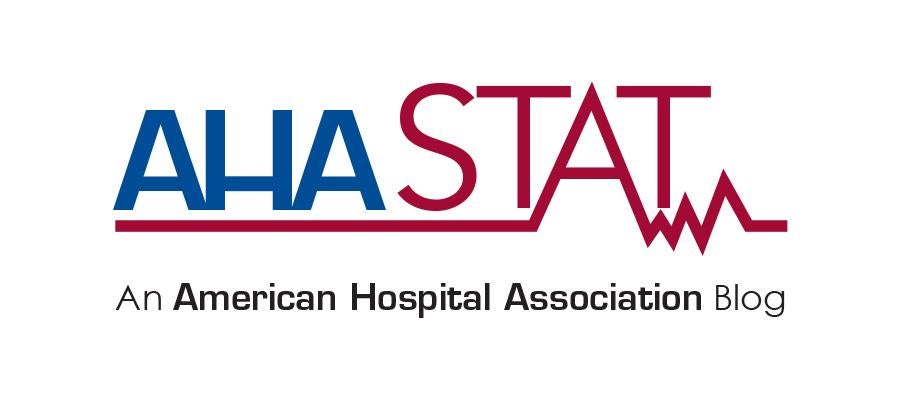Response to the Law 360 article: HHS rule could disrupt how hospitals and insurers set rates

A recent article, HHS Rule Could Disrupt How Hospitals and Insurers Set Rates, discusses a proposal by the Trump administration that could require hospitals and providers to publicly disclose the payer-negotiated rates charged for health care services raising concerns for the AHA.
Through the expedient of a number of questions, the administration is seeking to determine whether disclosing the rates commercial health insurers negotiate with hospital and hospital systems publicly would help patients “shop for and make decisions about their care” and have other beneficial effects. The authors of the HHS Rule article appear to conflate these questions with a provision in the Affordable Care Act for disclosure of the “chargemaster” – more accurately called the Charge Description Master (CDM), which is a list of procedures and products representing 100 percent of services used by patients in a hospital setting.”[i] They compound this misstep with a reference suggesting that a purported lack of transparency has contributed to hospital price growth. Using data from 2014 to support that supposition they neglect to reference more contemporary data from the National Health Expenditure report released by the Centers for Medicare and Medicaid Services in December 2018, attesting that that price growth for hospital care services was just 1.7 percent in 2017. Similarly, a report from the Altarum Center for Value in Health Care found hospital-spending growth in 2018 was lower than all other categories of services, including physician and clinical services and prescription drugs. None of these more contemporary data support a link between the two.
Whatever the point of the HHS Rule article, the fact is that disclosing negotiated prices won’t provide patients with the information they want and need about what’s covered under their policies and what the out-of-pocket costs will be for their care. And perhaps worse, it would likely facilitate price-fixing in an already concentrated commercial health insurance industry and other types of collusion that could lead to higher prices for consumers.[ii]
America’s hospitals and health systems support transparency that provides patients with the information they need about the cost of their care – wherever that care is provided. Most often that means helping patients understand what their commercial insurance contract covers and what it doesn’t and any out-of-pocket costs or co-pays and/or deductibles included in their policy.[iii] A recent survey by Accenture reported that this is information a majority of patients want.[iv] Unfortunately, the suggestion that negotiated rates be disclosed raised in the recent proposed rulemaking on health information technology would not support the type of transparency sought by patients and would likely have unintended and deleterious collateral effects.
Hospitals and health systems are working in myriad ways to improve patients’ access to cost information beyond the HHS requirement. For example, Memorial Healthcare System in South Florida provides patients their anticipated out-of-pocket costs for common medical procedures through a consumer-friendly online tool. Others, such as hospitals in HSHS Eastern Wisconsin Division and St. Luke’s University Health Network, have worked with their electronic health record vendors, payers and other partners to develop similar tools.
However, challenges remain. Providing accurate out-of-pocket cost estimates is only feasible for “shoppable” services that are discrete and planned in advance. Estimates are much harder for emergency services and complex care, when a final diagnosis may be unknown or the course of care is likely to change as treatment progresses. Given that patients treated in hospital settings are more medically complex and have more chronic conditions than patients treated in other settings, predicting the cost of services in advance can be more challenging for hospitals.
To be useful to patients, price transparency should:
- Provide pricing information that is easy to access, use, and understand;
- Create common definitions and language for describing hospital price information;
- Explain why and how prices can vary;
- Provide information on where a consumer can go to learn more about financial assistance options; and
- Encourage patients to consider quality and safety information in addition to price when making decisions.
True price transparency requires that providers and insurers work together to make sure all of the relevant data is brought together in a single place for the consumer. Transparency also means protecting patients from surprise bills, which is why earlier this year the AHA unveiled a set of principles to help the ongoing federal policy debate regarding surprise billing. The last thing a patient should worry about in a health crisis is an unanticipated medical bill and hospitals and health systems must protect patients from surprise bills that could unintentionally impact their out-of-pocket costs.
Hospitals will continue to work on improving patients’ access to information on their out-of-pocket costs and to help them understand the cost of their care. In addition, they will keep working towards a more affordable, sustainable health care system.
Melinda Hatton is general counsel at the American Hospital Association.
[ii] Letter from FTC staff to the Hon. Nellie Pout (April 17, 2007) https://www.ftc.gov/sites/default/files/documents/advocacy_documents/ftc-staff-comment-hon.nelie-pou-concerning-new-jersey.b.310-regulate-contractual-relationships-between-pharmacy-benefit-managers-and-health-benefit-plans/v060019.pdf and ACA Marketplace Premiums Grew More Rapidly in Areas with Monopoly Insurers Than in Areas with More Competition, August 2018, Health Affairs, p. 1243

